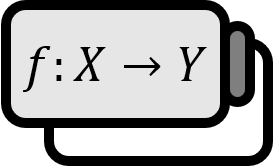Harmonic Function
Definition 1
If a function $\phi (x,y)$ has a continuous second derivative in the region $\mathscr{R}$ and is a solution to the Laplace’s equation, it is said to be harmonic. In other words, a harmonic function satisfies the following. $$ \Delta \phi = \nabla^{2} \phi = \phi_{xx} + \phi_{yy} = 0 $$ Especially, if a function $u(x,y), v(x,y)$ is harmonic and $u,v$ satisfies the Cauchy-Riemann equations, then $v(x,y)$ is referred to as the harmonic conjugate of $u(x,y)$. $$ \begin{cases} u_{x} (x,y) = v_{y} (x,y) \\ u_{y} (x,y) = -v_{x} (x,y) \end{cases} $$
Explanation
In a Narrow Sense
In a narrow sense, harmonic functions or harmonic waves mean the sine function or cosine function, or their combination, the complex exponential function.
$$ f(x) = A \sin kx \quad \text{or} \quad f(x) = e^{ix} = \cos x + i \sin x $$
Specifically, a time-harmonic function refers to a form in which a variable for time is added, as follows.
$$ f(x,t) = e^{i(kx-\omega t)} $$
In engineering, it is also called a stationary wave.
Osborne (1999). Complex variables and their applications: p58~59. ↩︎
